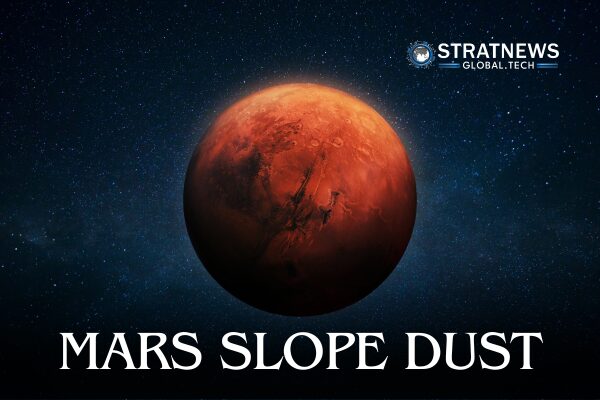Signs Once Thought to Indicate Water Now Linked to Dust Movements
For decades, images taken from orbit around Mars have shown dark streaks running down cliffs and crater walls. Many scientists believed these features, known as slope streaks, were caused by flowing water. This raised hopes that Mars might still have environments where life could exist.
However, a recent study challenges that idea. After analysing nearly 500,000 of these streaks, researchers now suggest they are likely caused by dry processes. Rather than water, it seems dust movement is responsible for the streaks’ appearance. This strengthens the theory that Mars is a cold, dry desert and not currently suitable for life on its surface.
Mars Dust Movement Mimics Liquid Flow on Slopes
The study found that fine dust from the Martian atmosphere collects on slopes. Events such as wind gusts, small meteorite impacts, or marsquakes can disturb this dust. When disturbed, the dust behaves in a way that resembles liquid flow. It creates finger-like patterns that run down hillsides, much like water might.
Adomas Valantinas, a planetary scientist at Brown University and co-author of the study, explained that the ultra-fine Martian dust acts like a fluid when triggered. “It’s similar to how dry sand flows like water when poured,” he said. “On Mars, low gravity and very fine dust combine to create these flow-like patterns.”
The research involved reviewing around 87,000 satellite images, many taken between 2006 and 2020 by NASA’s Mars Reconnaissance Orbiter. The streaks usually measure 600 to 775 metres in length and can form quickly, fading over several years. They often branch around obstacles, adding to the illusion of flowing water.
Study Focused on Key Martian Regions
Most of these streaks were found in Mars’ northern hemisphere. They were especially common in three areas: Elysium Planitia, Arabia Terra, and the Tharsis volcanic plateau. The latter includes Olympus Mons, the tallest volcano in the solar system.
Although the resolution of the images limits what can be seen, researchers estimate that up to two million such streaks may exist. A machine-learning model was used to examine links between dust levels, terrain, meteorite impacts, and atmospheric patterns. The results showed streaks were more likely in dusty regions and where wind patterns matched the slope direction.
The study also looked at recurring slope lineae (RSL), which are shorter-lived features mostly found in the Martian southern highlands. These appear in summer and disappear in winter. Like the longer streaks, RSL also seem to be caused by dry processes like dust devils and rockfalls.
No Clear Signs of Liquid Water on Mars
While water is essential for life, current surface conditions on Mars make it very difficult for liquid water to exist. The planet’s low temperature and thin atmosphere mean any water would likely evaporate or freeze quickly. Some scientists believe briny water, mixed with salts, might occasionally form in certain spots. This could provide a temporary, habitable niche.
However, the new analysis found no strong evidence connecting the slope features to conditions where water or frost could form. Instead, the features were linked to drier processes and terrain characteristics.
Valentin Bickel, a planetary geomorphologist and study co-author, noted that understanding whether these streaks involve water helps guide the search for life. “If they’re dry features, we can focus on areas with better chances of supporting life,” he said.
with inputs from Reuters


